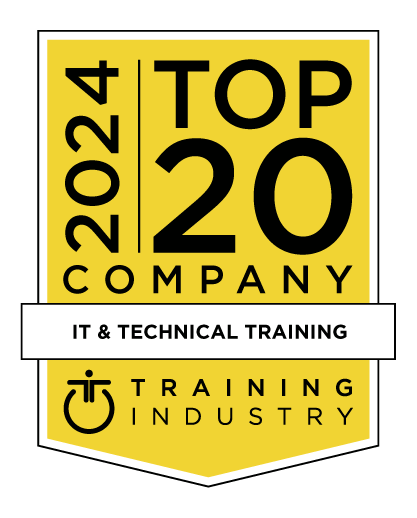title
Please take a moment to fill out this form. We will get back to you as soon as possible.
All fields marked with an asterisk (*) are mandatory.
Administering Collaboration Environments
Course Description
Overview
Administering Collaboration Environments (CLACE) is an instructor-led course for system administrators and customers involved with the Cisco Unified Communications Manager and Cisco Unity Connection product's day-to-day operation.The CLACE course is the replacement for the CMA / UCA courses.
CLACE is a lab-intensive course.
This course introduces you to the CUCM system, the necessary procedures for administering IP Phones and Users, understanding the Dial Plan, and implementing Features. The course also
covers Jabber administration and Cisco Unity Connection administration features, options, and configuration settings.
In addition to instructor-led lectures and discussions, you will configure CUCM and Cisco IP Phones in the lab, either in a live classroom or WebEx remote classroom environment.
Objectives
- Demonstrate an overall understanding of the Cisco Unified Communications Manager (CUCM) system and its environment
- Configure CUCM to support IP Phones
- Configure Cisco Unified Communications Manager and IM&Presence to support Cisco Jabber soft client.
- Configure CUCM to route calls to internal and PSTN destinations
- Configure User accounts and multi-level administration
- Demonstrate the use of Self Care Portal functionality
- Configure user features, including Hunt Groups, Call Pickup, and Call Park.
- Define the capabilities of and demonstrate the Bulk Administration Tool
- Define the SMART Licensing model for Cisco Unified Communications
- Demonstrate the use of the Unified Reporting tool
- Demonstrate the use of the Dialed Number Analyzer
- Explain the function of Cisco Unity Connection and the various interfaces that are used to access the system
- Describe the components that are required for user call processing by Cisco Unity Connection
- Implement the various features and options that are available to users in Cisco Unity Connection
- Explore Cisco Unity Connection version features and functions
- Use the various applications, tools, and reports that are available in Cisco Unity Connection
Audience
- Administrator
- IT support personnel
- Helpdesk support staff
- Network Engineering Staff
Prerequisites
-
Administering Collaboration Environments does not have prerequisites. However, the following knowledge and skills allow the student to gain the most from the course:
- An understanding of traditional digital PBX systems
- An understanding of basic telephony concepts
- Business-level competence using the Windows operating system
- Business-level competence using different Internet browsers
- Basic knowledge of traditional PSTN operations and technologies, including PBX and voice-mail administration tasks
- The ability to understand, read and speak English in a business and technical context
Topics
- Define Collaboration Benefits
- Describe On-Premise, Cloud, and Hybrid Deployments
- Describe On-Premise Collaboration Deployments
- Describe Cisco's Collaboration Endpoints
- Describe Cisco Collaboration On-Premise Edge Solutions
- Describe Cisco's Collaboration On-Premise Conferencing Solutions
- Describe Cisco Cloud Services
- Understand the On-Premise Collaboration Deployment Models
- Describe The Cisco Unified CM Cluster Services
- Define Network requirements for Collaboration
- Define Network Services for Collaboration
- Navigate Cisco Unified CM
- Discovery 1: Configure Cisco Unified Communications Manager Initial Parameters
- Explore Cisco Unified CM Groups
- Discovery 2: Configure the Cisco UCM Core Systems Settings
- Identify Cisco Endpoint Solutions
- Explore the Boot up Process of an Endpoint
- Describe Power Over Ethernet
- Discovery 3: Configure an Access Switch for an Endpoint
- Describe IP Network Settings
- Discovery 4: Deploy an IP Phone Through Auto and Manual Registration
- Discovery 5: Administer Endpoints in Cisco Unified Communications Manager
- Analyze Cisco UCM Users Types and Settings
- Describe Methods for Authenticating Cisco UCM Users
- Discovery 6: Create Local User Accounts
- Discovery 7: Adding Users in Cisco Unified Communications Manager
- Describe the Concepts of a Dial Plan and Call Routing
- Describe Elements of Call Routing
- Explore Digit Manipulation and Translation Patterns
- Discovery 8: Create a Basic Dial Plan
- Explore the Concepts of Class of Control
- Discovery 9: Explore Partitions and Calling Search Spaces
- Discovery 10: Explore Private Line Automatic Ringdown (PLAR)
- Configure a Cisco Jabber Endpoint in Cisco UCM
- Discovery 11: Implementing Common Endpoint Features (Configuring Hunt Groups and Call Coverage)
- Explore Mobility
- Discovery 12: Implement Mobility
- Media Resource Overview
- Media Resource Selection and Access Control
- Audio and Video Conference Bridge Devices
- Audio and Video Conference Bridge Integration Options
- Discovery 13: Configuring Media Resources
- Explore the Troubleshooting Process
- Describe Reporting and Maintenance Tools
- Describe the Cisco Real-Time Monitoring Tool
- Discovery 14: Use Reporting and maintenance Tools
- Describe Cisco IM and Presence Features and Architecture
- Clustering
- Describe Cisco IM and Presence Components and Communication Flows
- Cisco Jabber Deployment Modes
- Discovery 15: Deploy an On-Premise Cisco Jabber Client for Windows
- Overview of Cisco Unity Connection Integration
- SIP Integration
- Typical Integration Mistakes
- Integration Considerations
- Discovery 16: Configure the integration between Cisco Unity Connection and Cisco UCM
- Discovery 17: Configure Voicemail Users
- Call handler Overview
- System Call Handler
- Caller Input
- Operator Call Handler
- Goodbye Call Handler
- Directory Handler
- Interview Handler
- Overview of Cisco Unity Connection Troubleshooting Options
- Integration Troubleshooting Tools
- Cisco Real-Time Monitoring Tool
- Discovery 18: Troubleshoot Cisco Unity Connection
- Task 1: Activate Services
- Task 2: Verify Settings
- Task 1: Configure Cisco Unified Communications Manager Group
- Task 2: Configure Phone NTP Reference
- Task 3: Configure Configure Date/Time Group
- Task 4: Configure Device Pools
- Task 5: Configure Feature Control Policy
- Task 1: Configure Voice and Data VLANs on the Switch
- Task 2: Verification of VLANs and Power Usage
- Task 1: Add a Phone Manually
- Task 2: Add a Phone using the Bulk Administration Tool
- Task 3: Create Universal Templates for Auto-registration
- Task 4: Add a Phone using Auto-Registration
- Task 5: Test and Use UnifiedFX PhoneView
- Task 1: Applying Phone Configurations
- Task 2: Add Line Buttons to Phones
- Task 3: Change Softkeys
- Task 4: Configure Speed Dials and Abbreviated Dials
- Task 5: Implement Native CUCM Presence
- Task 1: Create New Local Users
- Task 2: Create a New Credential Policy for End Users
- Task 1: Change the Configurable Options for End Users
- Task 2: Assign Users to the Registered Phones
- Task 3: User Verification – Self Care Portal
- Task 1: Configure Route Groups
- Task 2: Configure a Route List
- Task 3: Add Route Patterns
- Task 4: Configure a Translation Pattern
- Task 5: Configure External Phone Number Masks
- Task 6: Configure Route List to Use the External Phone Number Mask
- Task 7: Configure Call Blocking with Route Patterns
- Task 1: Configure Partitions
- Task 2: Configure Calling Search Spaces
- Task 3: Assign Partitions and Calling Search Spaces using the Traditional Approach
- Task 4: Assign Partitions and Calling Search Spaces to Route Patterns and Gateways
- Task 5: Configuring the Line/Device Approach
- Task 6: Assign Calling Search Spaces using the Line/Device Approach
- Task 7: Using the Bulk Administration Tool Update Capabilities
- Task 1: Configure Partitions and Search Spaces for PLAR
- Task 2: Configure SIP Phone for PLAR
- Task 1: Create a Line Group
- Task 2: Create a Hunt List
- Task 3: Create a Hunt Pilot
- Task 4: Test Call Distribution
- Task 5: Configure Final Forwarding
- Task 6: Configure Call Queueing
- Task 7: Configure Call Pickup Groups
- Task 8: Configure Call Park
- Task 9: Configure Directed Call Park
- Task 1: Configure Extension Mobility
- Task 2 Enabling Unified Mobility
- Task 1: Third-Party SIP Phone Configuration Procedure
- Task 2: Activate Services and Media Resource Availability
- Task 3: Configure Meet-Me Directory Numbers
- Task 4: Configure MRGs and MRGLs
- Task 1: Run Reports Through Unified Reporting
- Task 2: View Server Data Through RTMT
- Task 3: Analyze Call History Using CDR Analysis and Reporting
- Task 1: Configure a SIP Trunk to Cisco IM&P
- Task 2: Add Cisco Services Framework Device
- Task 3: Create UC Services and Service Profile
- Task 4: Configure End-User Settings
- Task 5: Configure Cisco Jabber Client for Windows
- Task 1: Create SIP Trunk Security Profile
- Task 2: Create a SIP Profile
- Task 3: Create SIP Trunk to Unity Connection
- Task 4: Create Routing to Unity Connection
- Task 5: Create Voicemail Pilot and Profile
- Task 6: Configure Unity Connection
- Task 7: Test Integration With PhonerLite
- Task 1: Configure Authentication Rules
- Task 2: Define Classes of Service
- Task 3: Configure Holidays and Schedules
- Task 4: Configure Templates
- Task 5: Create New Voicemail Users
- Task 6: Configure Roles to Provide Administrative Access
- Task 7: Configure Caller Input and Alternate Greetings
- Task 8: Configure Alternate Extension
- Task 1: Prepare for Discovery
- Task 2: Troubleshoot the Integration Between Cisco Unity Connection and Cisco UCM
- Task 3: Troubleshoot Login Issues
- Task 4: Troubleshoot Call Forward Issues
- Task 5: Troubleshoot Unable to Add Mailbox Issue
- Task 6: Troubleshoot Direct Transfer to Voicemail
Self-Paced Training Info
Learn at your own pace with anytime, anywhere training
- Same in-demand topics as instructor-led public and private classes.
- Standalone learning or supplemental reinforcement.
- e-Learning content varies by course and technology.
- View the Self-Paced version of this outline and what is included in the SPVC course.
- Learn more about e-Learning
Course Added To Shopping Cart
bla
bla
bla
bla
bla
bla
Self-Paced Training Terms & Conditions
Exam Terms & Conditions
Sorry, there are no classes that meet your criteria.
Please contact us to schedule a class.

STOP! Before You Leave
Save 0% on this course!
Take advantage of our online-only offer & save 0% on any course !
Promo Code skip0 will be applied to your registration
Purchase Information
title
Please take a moment to fill out this form. We will get back to you as soon as possible.
All fields marked with an asterisk (*) are mandatory.










